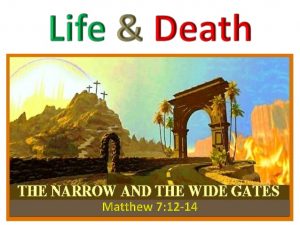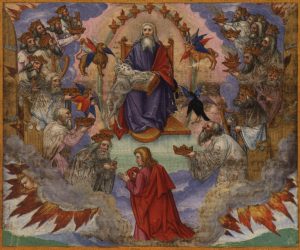
Shownotes
Welcome to Day 1426 of our Wisdom-Trek, and thank you for joining me.
I am Guthrie Chamberlain, Your Guide to Wisdom
Mastering the Bible – Figurative Interpretation and Biblical Symbols – Worldview Wednesday
Wisdom - the final frontier to true knowledge. Welcome to Wisdom-Trek! Where our mission is to create a legacy of wisdom, to seek out discernment and insights, to boldly grow where few have chosen to grow before. Hello, my friend, I am Guthrie Chamberlain, your captain on our journey to increase Wisdom and Create a Living Legacy. Thank you for joining us today as we explore wisdom on our 2nd millennium of podcasts. Today is Day 1426 of our Trek, and it is Worldview Wednesday. Creating a Biblical Worldview is essential to have a proper perspective on today’s current events. To establish a Biblical Worldview, you must have a proper understanding of God and His Word. Our focus for the past 39 weeks on Worldview Wednesday is Mastering the Bible, through a series of brief insights. These insights are extracted from a book of the same title from one of today’s most prominent Hebrew Scholars, Dr. Micheal S. Heiser. This book is a collection of insights designed to help you understand the Bible better. When we let the Bible be what it is, we can understand it as the original readers did, and as its writers intended. Today we will conclude this book study with the final two insights.
Mastering The Bible – Figurative Interpretation and Biblical Symbols
Insight Seventy-Nine: Figurative Interpretation Takes the Book of Revelation as Seriously as Literal Interpretation
Dr. Heiser shares that during his teaching career is that one of the biggest misconceptions he has encountered about Bible interpretation is the idea that interpreting what the Bible says with symbols or metaphors equates to concluding that what you’re reading isn’t real. This is deeply flawed thinking. But it’s nevertheless understandable.
Bible teachers and preachers are fond of saying that the Bible needs to be interpreted literally for it to be taken seriously. Taking something “literally” means you’re ruling out any type of figurative language. That only makes sense if the biblical authors wanted to be taken that way. Sometimes they didn’t. Since they were human, much of what they wrote could have meaning on more than one level. Insisting only on literalism stifles communication.
We use words every day in ways that would be comical or offensive if taken literally, yet we never expect what we say to be denigrated or considered phony. When you say on a hot day, “I was roasting out there today, were you?” When you say you’re madly in love with your wife, should I presume you’re insane for being attracted to her? If your boss is hard-hearted, have you just diagnosed arteriosclerosis? When you tell your neighbor his new car is a sweet ride, will he ask you not to lick it again? We can laugh at these absurdities, but all of these statements are meant to be taken seriously. They all have meaning that corresponds to reality.
Biblical writers didn’t live in an alternate universe where people never used figurative language, metaphors, or symbolic references. All of those things are stock elements of the way language works. Pitting “literalism” and ‘‘figurative” against each other in some sort of semantic death match demonstrates poor thinking.
The reason we can understand when to take a statement figuratively or literally is that the world we’ve experienced informs us how to interpret it. In other words, the cumulative effect of our upbringing, our cultural setting, our experiences, and our Worldview wires us in such a way that we intuitively know what is meant. To reject symbolic interpretations of the Bible is to deny the biblical writers their humanity. Instead of letting them be the authority for understanding what they wrote, we assume we know better.
Instead of bending the book of Revelation to our own will in the name of literalism, we need to do everything we can to think as the writers did and to read what they wrote through ancient eyes. We need to learn all we can about their culture, Worldview, beliefs, and ancient times. That takes work. Fortunately, we have an abundance of resources today that can help us with that task.
Insight Eighty: Revelation Uses Many Biblical Symbols, and They All Have Context That Guide How We Interpret Them
 Just as nonliteral doesn’t mean “not real,” biblical symbols aren’t invitations to interpret Scripture however you want. Symbols not only have true meanings, but their meanings can be incredibly powerful. The meanings of biblical symbols aren’t open to our imagination. They are rooted in their usage in Scripture and informed by the Worldview of the original writers and readers. They have clear, knowable contexts that must be observed and followed for interpretation.
Just as nonliteral doesn’t mean “not real,” biblical symbols aren’t invitations to interpret Scripture however you want. Symbols not only have true meanings, but their meanings can be incredibly powerful. The meanings of biblical symbols aren’t open to our imagination. They are rooted in their usage in Scripture and informed by the Worldview of the original writers and readers. They have clear, knowable contexts that must be observed and followed for interpretation.
So to understand a biblical symbol used in Revelation, that symbol can’t be given a meaning that would be utterly foreign to the biblical writer and his original readers. The goal of biblical interpretation is to interpret Scripture in its own context, not ours. Bible students are fond of the mantra of interpreting the Bible literally, but when it comes to interpreting Revelation, it is too quickly forgotten.
Many approach Revelation as though modern times unlock its meaning. The locust plague of Revelation 9 describes military helicopters; the grotesque horsemen must surely be tanks and other armored vehicles. The ten heads on the beast from the sea must be a ten-nation European confederacy. The biblical writers didn’t know about helicopters or tanks, and there was no Europe when John wrote the book. But there were armies and empires. By taking things in context, and especially noting how John uses the Old Testament, we can discern meanings in symbols that transcends time. The examples above illustrate what happens when we impose our context on the symbols. We’re forced toward the false conclusion that Revelation really couldn’t be accurately interpreted before modern times and modern warfare. To insist that Revelation only has meaning in our contemporary context is to assert that it was meaningless before our time. Imposing our context onto Revelation is interpretively flawed for another reason. Many of the symbols in Revelation have no coherent modern counterpart. What is the contemporary filter for the twenty-four elders and the living creatures that surround the enthroned lamb in Revelation 5? The golden censer of Revelation 8? The two witnesses of chapter 11? The great prostitute of chapter 17? All of these have secure Old Testament contexts.
Imposing our context onto Revelation is interpretively flawed for another reason. Many of the symbols in Revelation have no coherent modern counterpart. What is the contemporary filter for the twenty-four elders and the living creatures that surround the enthroned lamb in Revelation 5? The golden censer of Revelation 8? The two witnesses of chapter 11? The great prostitute of chapter 17? All of these have secure Old Testament contexts.
When it comes to symbols, we must discern the symbol’s background and trace its usage and repurposing throughout the biblical canon. Revelation’s original readers could do that. Like us, they could know in broad strokes what John was saying. Pressing meaning beyond that point forces the book into a precision that was never intended.
That will conclude the final two insights from Dr. Heiser’s book “Mastering The Bible.” Next Worldview Wednesday, we will begin a new study based on a course by Dr. Heiser, which I recently completed through Logos Mobile Education. This multi-week study will cover “Sons and Daughters of God: The Believers Identity, Calling, and Destiny.” I believe you will find each Worldview Wednesday contains thought-provoking topics to consider as we build our Biblical Worldview.
Tomorrow we will continue with our 3-minute Humor nugget that will provide you with a bit of cheer, which will help you to lighten up and live a rich and satisfying life. So encourage your friends and family to join us and then come along with us tomorrow for another day of ‘Wisdom-Trek, Creating a Legacy.’ If you would like to listen to any of our past 1425 treks or read the Wisdom Journal, they are available at Wisdom-Trek.com. I encourage you to subscribe to Wisdom-Trek on your favorite podcast player so that each day’s trek will be downloaded automatically.
If you would like to listen to any of our past 1425 treks or read the Wisdom Journal, they are available at Wisdom-Trek.com. I encourage you to subscribe to Wisdom-Trek on your favorite podcast player so that each day’s trek will be downloaded automatically.
Thank you so much for allowing me to be your guide, mentor, and, most of all, your friend as I serve you in through this Wisdom-Trek podcast and journal.
As we take this Trek together, let us always:
- Live Abundantly (Fully)
- Love Unconditionally
- Listen Intentionally
- Learn Continuously
- Lend to others Generously
- Lead with Integrity
- Leave a Living Legacy Each Day
I am Guthrie Chamberlain….reminding you to ’Keep Moving Forward,’ ‘Enjoy your Journey,’ and ‘Create a Great Day…Everyday’! See you Tomorrow!